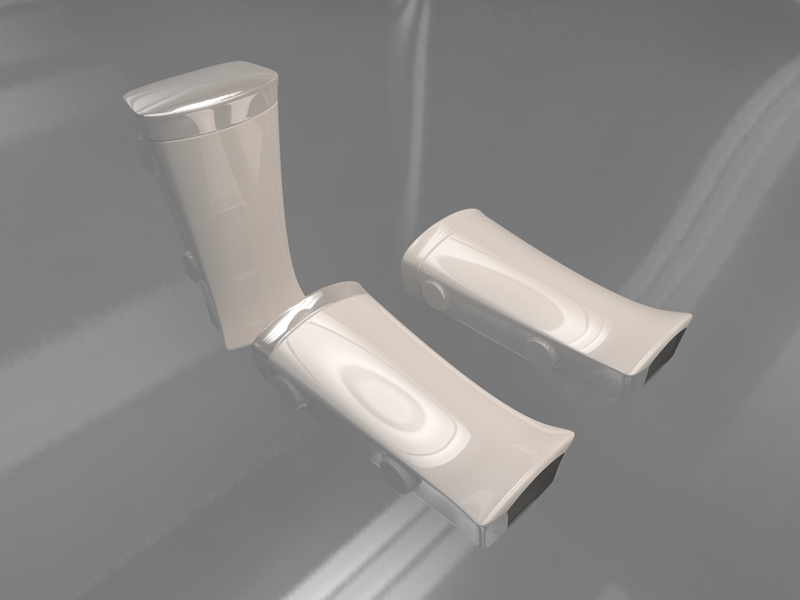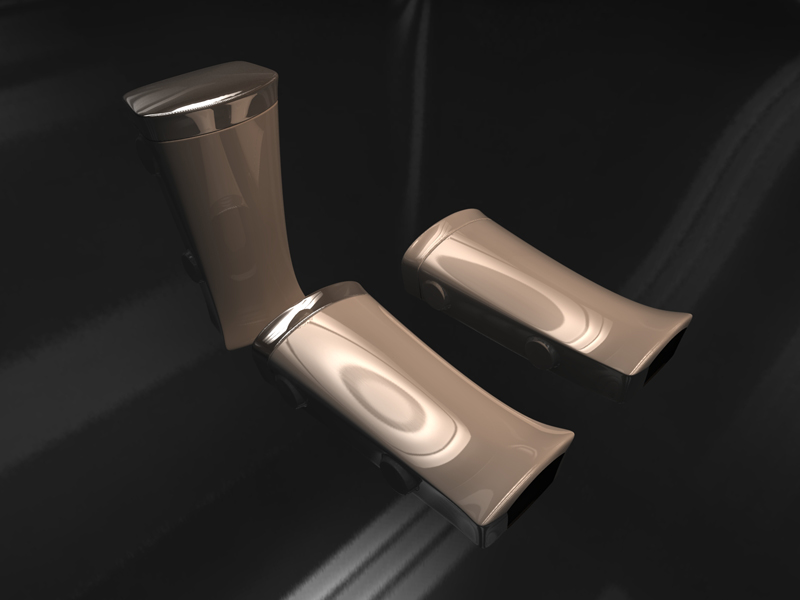GREAT SCOTT, MICHAEL! - I think I figured it out!
I created this render scene with three versions of the lid and the tank of the toilet model.
The upright one is the original and the first prone one (left on bottom) is a copy of the upright one.
The lid object at the top of the one on the right has had the normals reversed with the non-UI "Flip" command.
A single porcelain type material was applied to everything.
As you can see from these pics, If I'm not mistaken (the last image has a darker gamma applied): the lid object on the top of the right prone model is the same color as the rest of the tank model.
The original lid objects are not only discolored, but have a different reflection quality.


Michael, I think you may know right off, but just in case, I provided a .3dm and .obj file inside "objects_normals_test_01.zip".
Okay, it seems obvious. With Kerkythea, normal orientation counts.
So I have to find one of two solutions. Either 1) I have to find out how to get Kerkythea to see each side as the same front side and apply the materials likewise,
or 2) I would like to ask you to consider a non-UI command for a future release that could show a special color to the back-side of the surface to indicate it's normal orientation.
It would probably have to be done on the direct-x level, but would give users a special-case way to see which objects need to have the "Flip" command applied.
Oh, and now you have me anxious for the future enhancement of the Blend tool. =-)
Thanks.